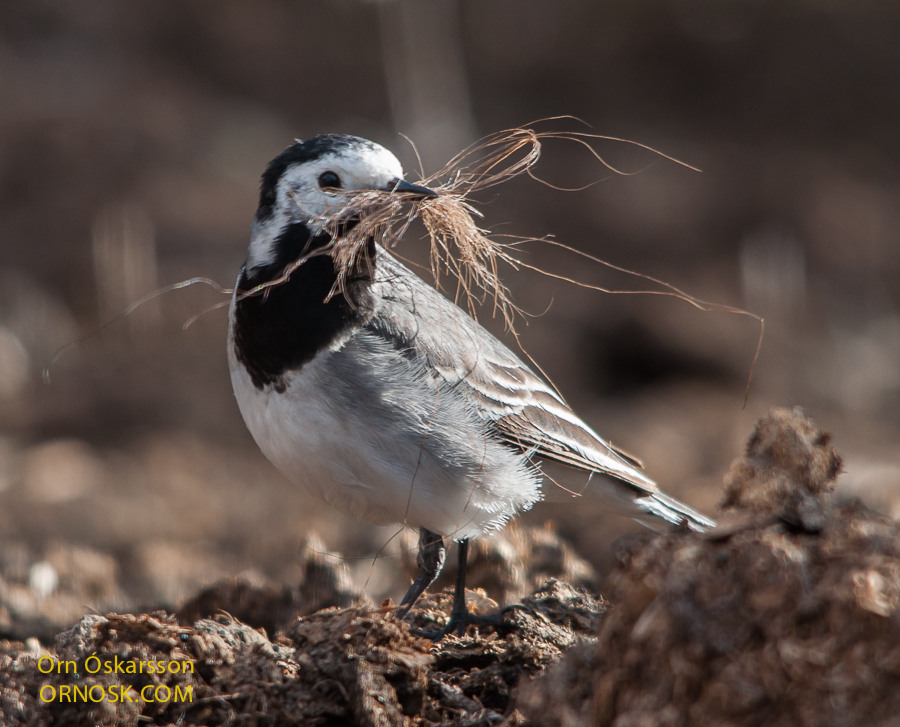
The White Wagtail pair is building a nest in a big spruce tree in the garden, the same tree as in recent years. This is the female collecting horse hair that will in all probability serve as a lining inside the nest.
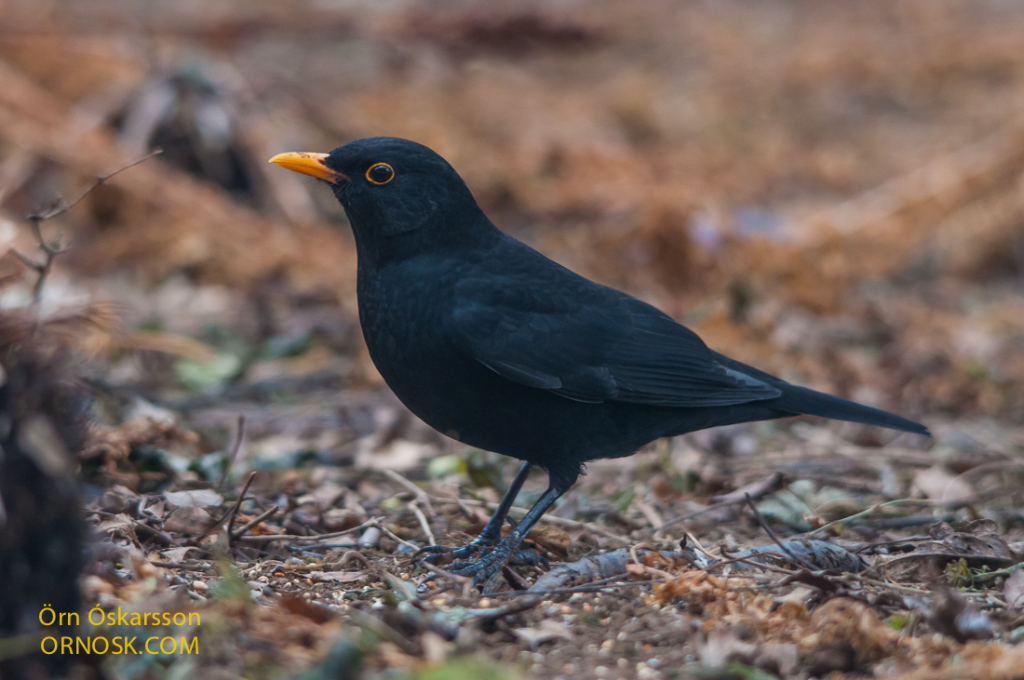
The first chicks this spring have hatched and jumped out of the nest. This morning we saw a Blackbird chick with a very short tail, it was hopping around and trying its wings. We hope that it will not fall prey for the cats that regularly visit the garden.
This is one of the male Blackbirds that was here this winter and perhaps the father of the chick we saw this morning.
In the last few days the wind has been blowing from the Southeast and flocks of Barn Swallows (Hirundo rustica) have been seen around the Southwest part of the country. Today there were 12 Barn Swallows soaring over River Ölfusá by Selfoss and there were around 23 on the beach by Stokkseyri, South Iceland. Flocks have been seen in several places. These are the biggest groups of Barn Swallows to be seen in many years. They are annual vagrants in Iceland and have bred here a few times. If numbers are anything to go by it is very likely that they will breed here this summer.
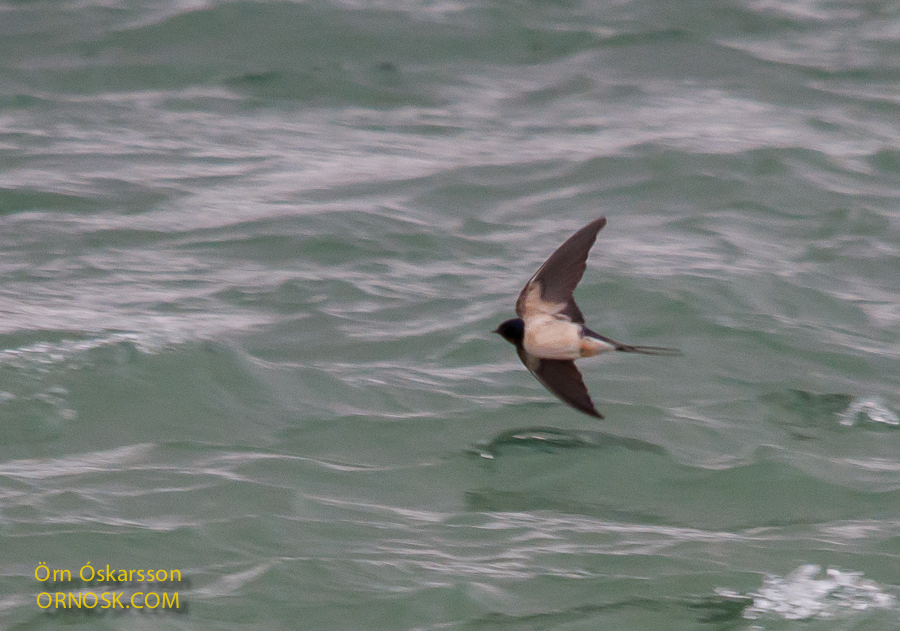
This photo is taken today by Ölfusá River.
This swallow was at the beach in Stokkseyri, South Iceland.
Courtship is in full swing with the Red-throated Diver in the nature reserve in Flói (Fuglafriðland í Flóa) and soon they will start breeding. This place probably offers the best circumstances to observe the Red-throated Diver while courting, breeding and caring for their offspring. The area is popular among birders and photographers because here you can come quite close to them. The Divers are especially tame and probably more used to people than in many other places.
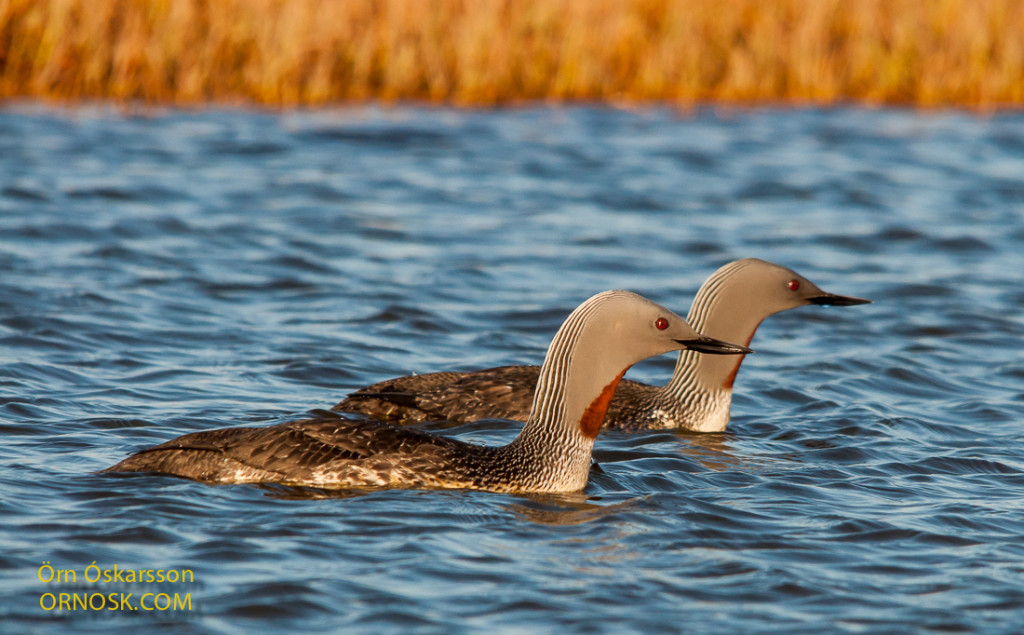
It is very important during the nesting time to respect the birds privacy by not coming too close. If the Divers get tired of trespassing people they might abandon the nests.
A female Siskin (Carduelis spinus) appeared in the garden today. Siskins have bred in Iceland on and off in the last 15 years. The population is small and fragile.
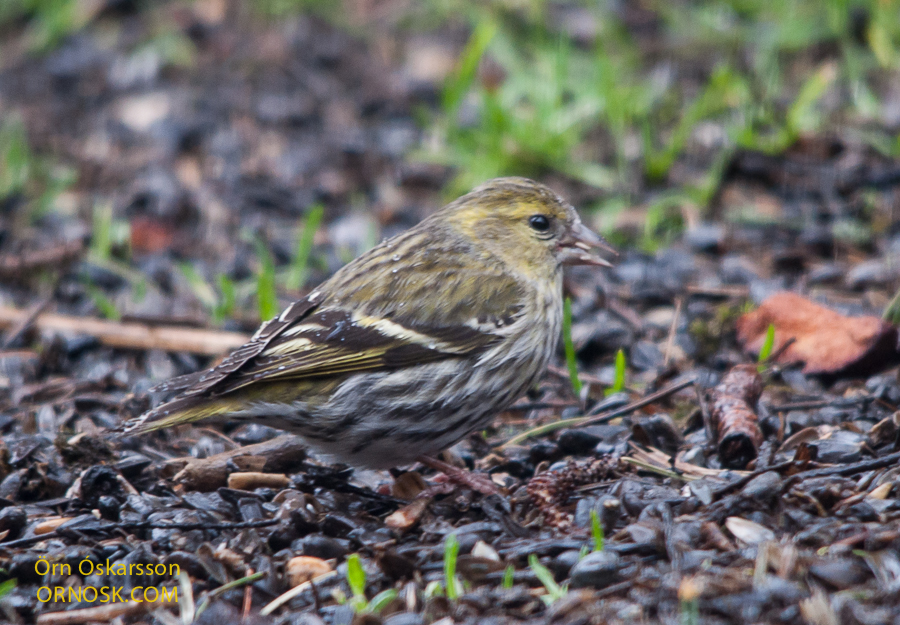
Siskins are migrants in Iceland and there are probably great losses on their long journey over rough oceans to and from their winter grounds.
The first Red-Necked Phalaropes (Phalaropus lobatus) have been arriving in Iceland in the last few days. They are the last of the migrants to arrive along with their cousins the Grey Phalarope/Red Phalarope (Phalaropus fulicarius) of which there are only a few in Iceland. The Icelandic Red-Necked Phalarope probably overwinters with the North American population on the Pacific coast of Ecuador and Peru. They are seabirds that only come inland to breed but they breed both in lowlands and highlands.
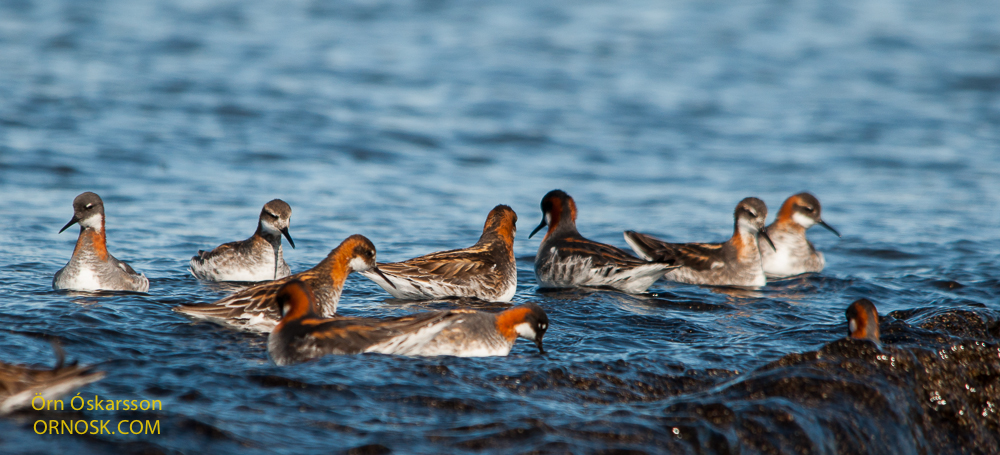
The Icelandic population is estimated around 50,000 pairs.
More on the Red-necked Phalarope
A lot of Golden Plovers are still in urban areas, in places where we are not so used to seeing them. You can see them in home gardens and most open areas and they are often not getting along too well. It seems that they are claiming territory and have to chase away those that come too close.
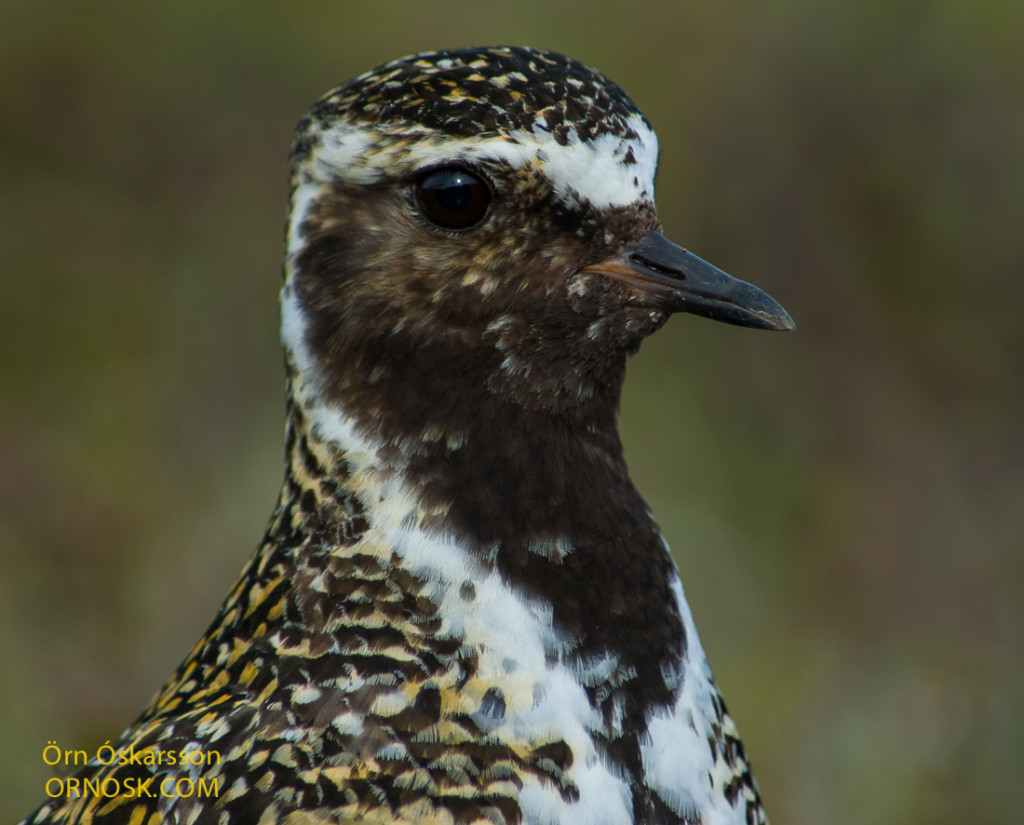
The Golden Plover´s habitat is in lowlands and highlands, in meadows and heaths. This spring there has been a lot of snow in the interior so the ones that are used to breeding in the highlands are probably the ones that are still in the towns. Hopefully the snow in the interior will melt soon so they can move to their breeding areas.
The first Arctic Terns were seen in Selfoss yesterday. A few days ago they were seen at the coast. The Tern is known as one of the longest distance migrant. It is an agile flyer and is on constant flight over sea except during the breeding time in the Arctic. Its winter grounds, if you can call it that, are in the sea around South Africa and Antarctica.
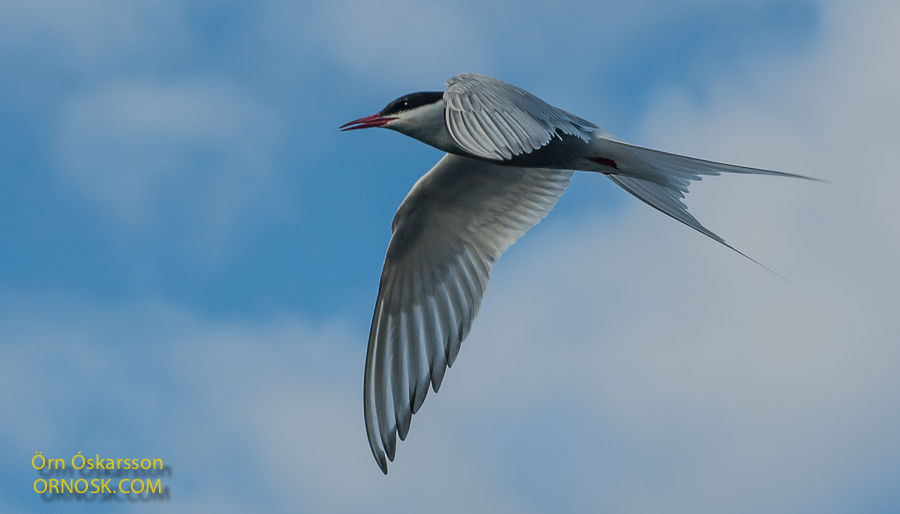
The Tern is a breeding bird in Iceland, mostly staying near the coast but also inland, even as far as the interior. The Icelandic breeding population is estimated around 500,000 pairs.
Video from last summer, Veiðivötn, South Interior, Iceland.
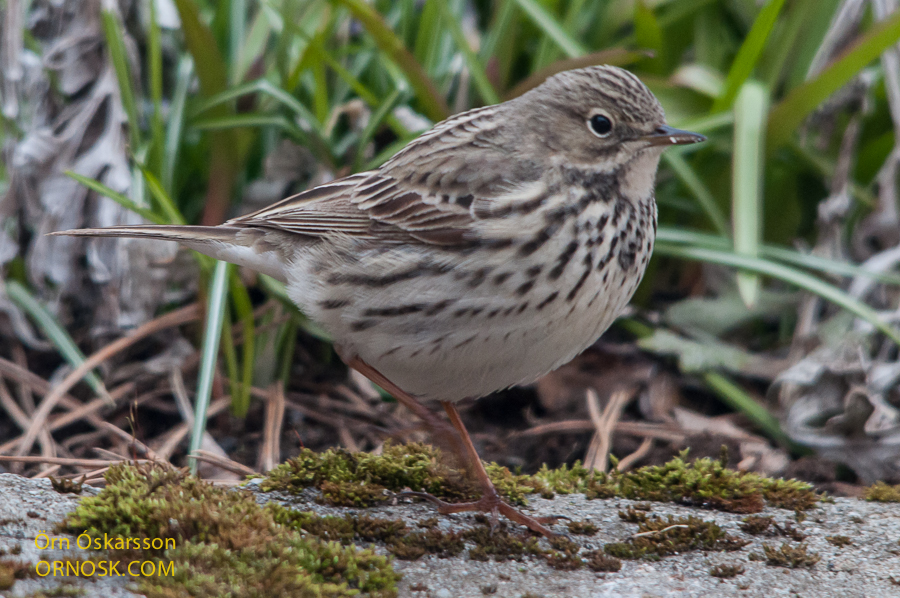
Meadow Pipits visit the garden both in spring and autumn. Now we have had up to four at the same time which is unusual. In the last few days two of them have claimed territory here, one south of the house and the other north of the house. They chase all others of their kind away and are eating the leftovers from this winter, sunflower seeds, something we have not seen before. They will probably move to their natural habitat in the meadows as soon as the weather gets milder.